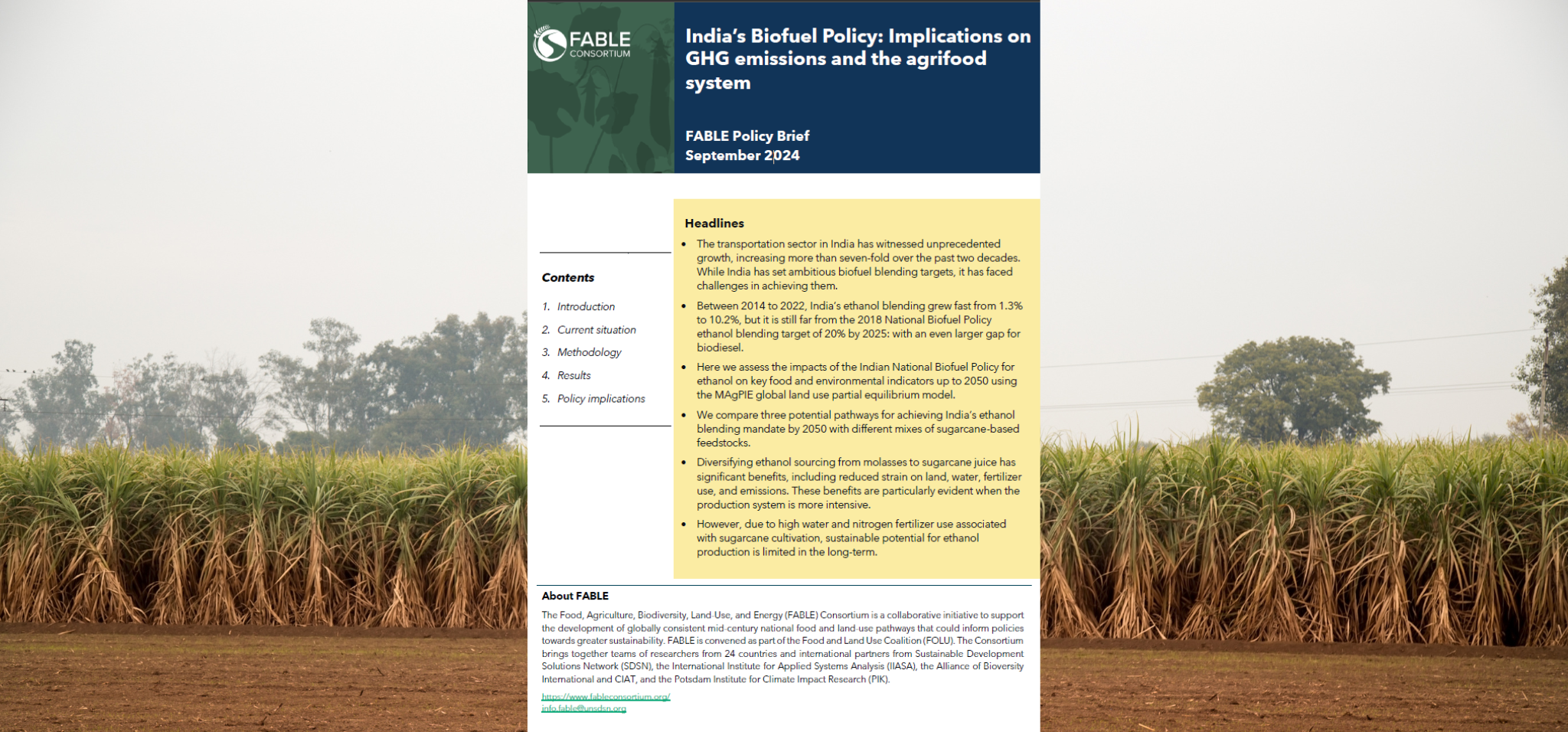
A recent policy brief by FABLE India analyzes India's 2018 National Biofuel Policy and its implications for GHG emission reductions in the AFOLU sector and the agrifood system. Using the MAgPIE global partial equilibrium model, the brief examines the effects of different sugarcane-based feedstock mixtures on meeting India's ethanol blend mandate and their impact on food and environmental indicators up to 2050.
Ethanol blending in India increased from 1.3% in 2014 to 10.2% in 2022, yet remains short of the 20% target by 2025. This study assesses three pathways for achieving the ethanol blending mandate by 2050, emphasizing the advantages of diversifying ethanol sources from molasses to sugarcane juice. This diversification can reduce land, water, and fertilizer use, as well as emissions, especially with more intensive production systems.
However, it also notes the sustainability challenges posed by the high water and nitrogen fertilizer demands of sugarcane cultivation. The brief provides important insights into the trade-offs between biofuel production and environmental sustainability.